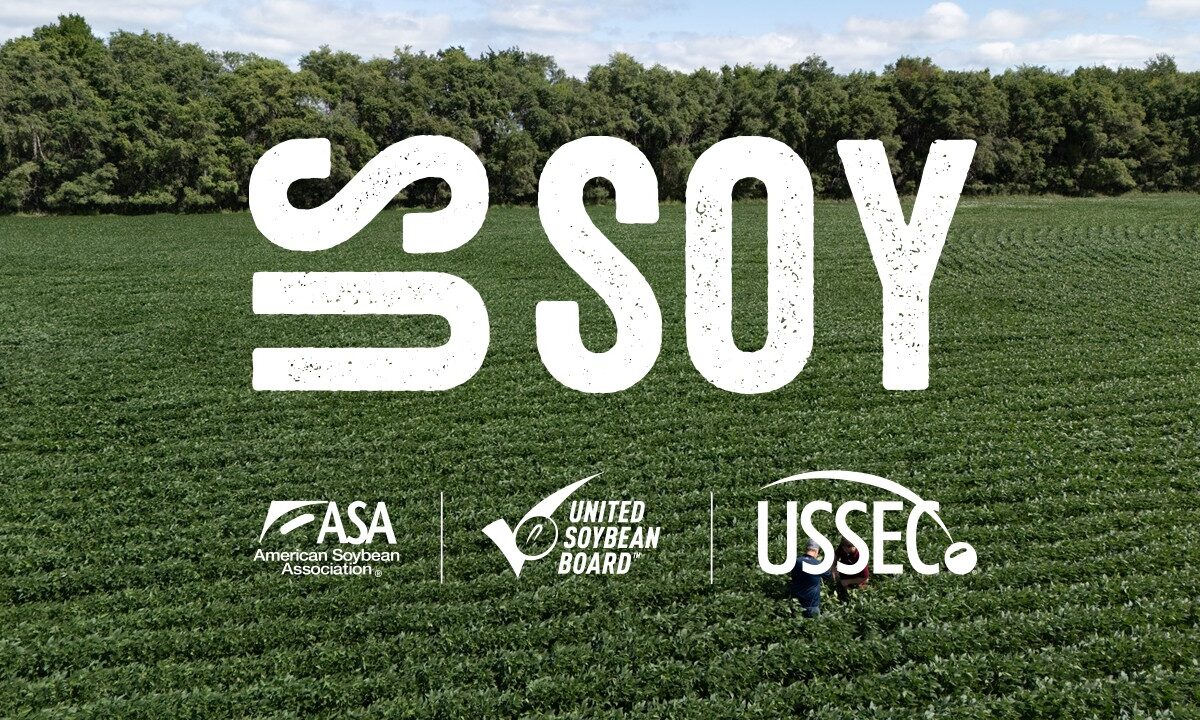Research Roundup

Checkoff-funded research is how advancement happens. Always seeking new markets and new opportunities for U.S. soy, researchers look at innovative ways to add value for farmers through increasing soybean oil diversity and identifying new consumer opportunities.
Feeding High Oleic
Innovative Research to Explore Adoption of High Oleic Soybean Oil in Animal Agriculture
The soy checkoff is funding research to explore the benefits of feeding high oleic soybean oil to fish, swine, and poultry and evaluating its effect on product quality.
The trial is broken into three parts: High-oleic acid in rainbow trout diets, the effect of high oleic soybean oil on growth performance and meat quality of finishing pigs, and a comprehensive approach to high oleic soybean oil inclusion for broiler chickens, laying hens and finishing hogs.
Simply put, the goal is to show how high oleic soybean oil could improve shelf-life and the taste, smell, texture and tenderness for a variety of poultry and meats. High oleic also has the potential to replace omega-3 rich fish oil in feed rations for fatty fish. This is promising, as overfishing has led to an increased price and limited availability for such fish.
Philip Lobo, expert feed consultant for USB and one of the project’s champions, says “The market for soybean oil has traditionally been for human, biodiesel and other industrial uses. This line of research is exploring a new product for new audiences. It is very exciting. As with any very new area of exploration, we have a long way to go, but the payoff could be big.”
Lobo breaks down the project and adds, “If high oleic soybean oil can provide appropriate economic value to the meat and poultry industries at 41 cents per pound, at just a 2 percent inclusion rate towards the last 20 percent of a broiler chicken’s life, the potential volume would be 450,000 pounds per year, or $185 million dollars. Similarly, if included in a pig’s diet in the last 10 percent of its life, the potential volume would be 185 million pounds per year, about $75 million.”
Demonstrating new and diverse aspects of U.S. high oleic oil’s value is likely to provide significant opportunities for new demand for this oil in animal diets.
EPA/DHA from Soy
Always looking for innovative ways to add value for farmers, check-off funded research is turning toward new consumer opportunities. One such opportunity could directly affect human health.
Eicosapentaenoic acid (EPA) and docosahexaenoic acid (DHA) are highly unsaturated fats, better known to consumers as omega-3 fats. EPA and DHA play a significant role in human health, essential to maintaining healthy brain, retina and cardiovascular functions.
In a project looking at ways to improve oil diversity and thereby capture greater market share, researchers are modifying soybeans to improve soybean oil and essential fatty acid content. The goal is to produce desirable omega-3s that are favorable for human health, offering a new use of soybean oil for human consumption.
Today’s consumers are health conscious and proactive about improving their health through food. Following that trend, this project meets a clear consumer need in the health and nutrition market. These applications represent new market opportunities for oil use, significantly enhancing overall soybean value.
Biodiesel Project Update
Kaleb Little, director of communications with the National Biodiesel Board, affirms that the demand for biodiesel is strong and growing. He says, “Farmers and ranchers are powering up their diesel engines every day to drive their operation. The agriculture industry is a strong customer base for biodiesel, often using the more sustainable fuel to produce the feedstocks needed for the next round of biodiesel production. Biodiesel provides an opportunity for farmers to create additional demand for the things they grow like soybean oil, canola oil, animal fats, and other biodiesel feedstocks through on-farm use. Farmers’ commitment to biodiesel is reflected in their more than 25 years of investment in the product through investments of soybean checkoff dollars.”
According to 2018 survey research conducted by the National Work Truck Association, biodiesel is the top alternative fuel choice for fleets. With between 2.6 and 2.9 billion gallons of biodiesel consumed each of the last two years, biodiesel accounts for nearly 5 percent of the on-road diesel volume. Biodiesel production is expected to top 2.5 billion gallons in 2018 for the third straight year.
In recent years the biodiesel industry has experienced a significant increase in the use of soybean oil as production volumes have grown exponentially. In the last 10 years, there was a 300 percent increase. It is also predicated to jump from 6.9 billion pounds of soybean oil to biodiesel production in 2018 to 7.8 billion pounds in the coming year, according to USDA projections. Last year, 33 percent of all domestic U.S. soybean oil was used for biodiesel – its second largest use.
The soybean industry’s relationship with biodiesel is a marked benefit to soybean production. Soybean oil has been at least 50 percent of the feedstocks used in biodiesel production over the last 10 years and is projected to maintain a similar market share over the next decade. Soybean growers can expect to see $0.63 per bushel or $36 per acre in additional value thanks to biodiesel production.
Little notes, “In a year of slim margins for farmers, we want producers to know the diesel market is here to stay and that the future for diesel technology remains bright. Diesel demand will continue to grow with the economy, and as the economy expands we will need more trucks and more fuel. Diesel technology is going to be around for a long time and cleaner-burning, renewable biodiesel is making up an ever-increasing percentage of our nation’s fuel supply.”



